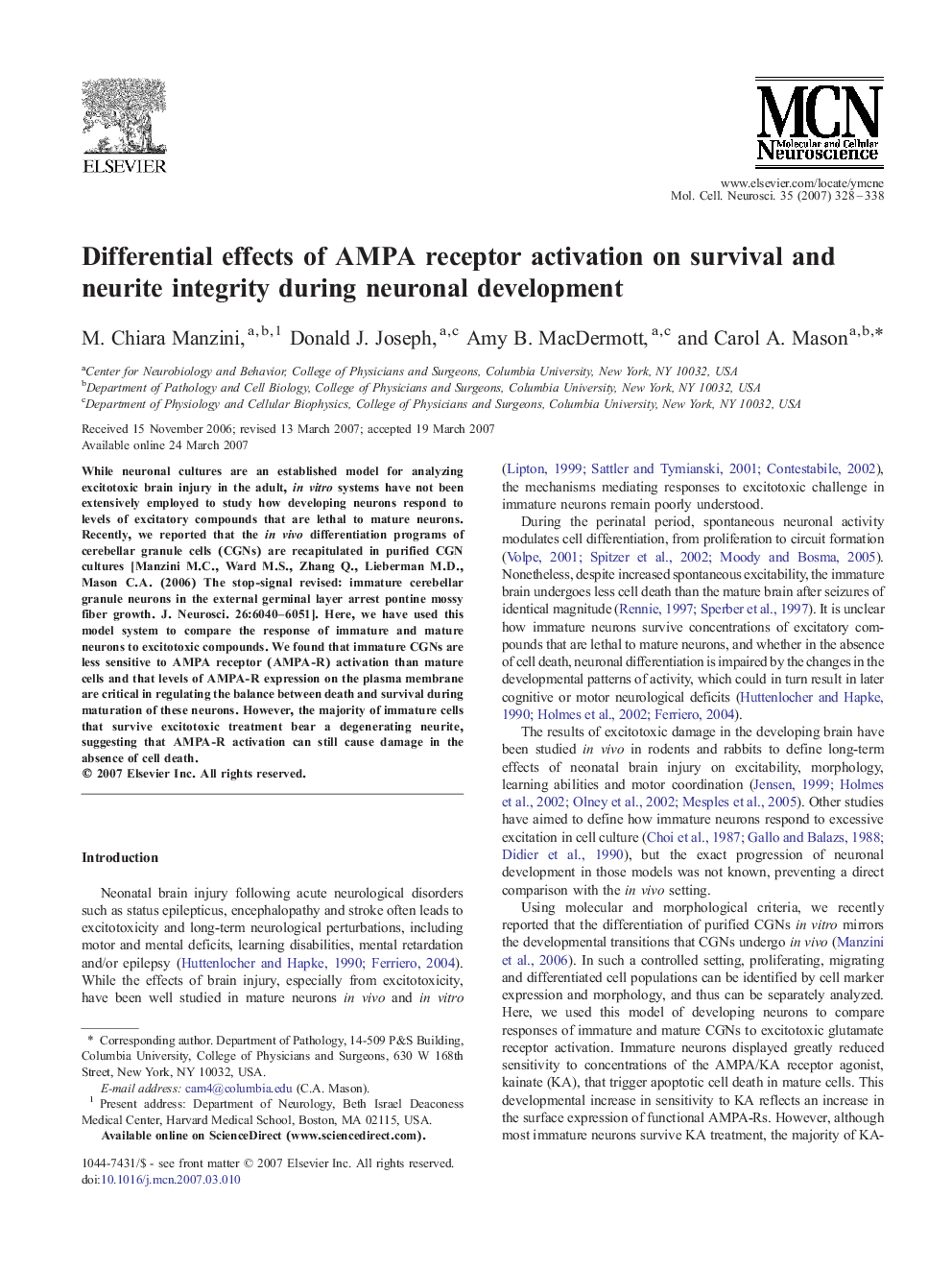| Article ID | Journal | Published Year | Pages | File Type |
|---|---|---|---|---|
| 2199408 | Molecular and Cellular Neuroscience | 2007 | 11 Pages |
While neuronal cultures are an established model for analyzing excitotoxic brain injury in the adult, in vitro systems have not been extensively employed to study how developing neurons respond to levels of excitatory compounds that are lethal to mature neurons. Recently, we reported that the in vivo differentiation programs of cerebellar granule cells (CGNs) are recapitulated in purified CGN cultures [Manzini M.C., Ward M.S., Zhang Q., Lieberman M.D., Mason C.A. (2006) The stop-signal revised: immature cerebellar granule neurons in the external germinal layer arrest pontine mossy fiber growth. J. Neurosci. 26:6040–6051]. Here, we have used this model system to compare the response of immature and mature neurons to excitotoxic compounds. We found that immature CGNs are less sensitive to AMPA receptor (AMPA-R) activation than mature cells and that levels of AMPA-R expression on the plasma membrane are critical in regulating the balance between death and survival during maturation of these neurons. However, the majority of immature cells that survive excitotoxic treatment bear a degenerating neurite, suggesting that AMPA-R activation can still cause damage in the absence of cell death.
